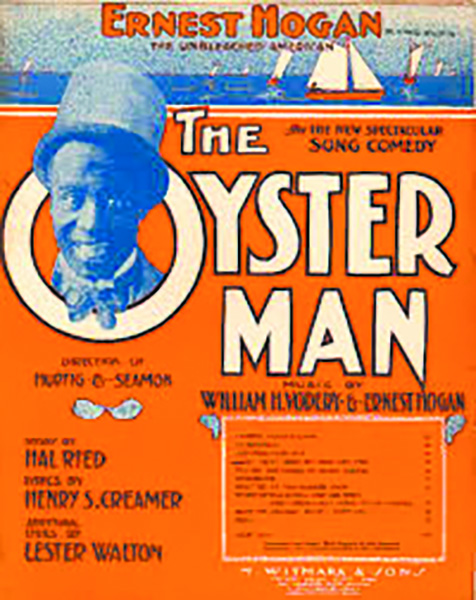Black Arts and Culture
Black History Month: The History of Black Theater – Part 2
Delving deeper into the history of Black Theater unveils a captivating journey through the cultural tapestry of African-American life. From the pioneering productions of the Harlem Renaissance to the poignant reflections of the Civil Rights era and beyond, Black Theater has been a powerful medium for storytelling, activism, and artistic expression.
\#BlackHistoryMonth #BlackTheater #HarlemRenaissance #CivilRights #Broadway #CulturalHeritage

By Leonard E. Colvin
Chief Reporter Emeritus
New Journal and Guide
During Black History Month (BHM) 2024, the nation is celebrating African-Americans’ contribution to Arts and Entertainment in this nation and globally.
Black Theater, encompassing storytelling, literature, poetry, visual arts, dance and acting, reveals the varied layers of African-American culture, history, struggle and triumph during four centuries in the Americas as it entertains.
*****
Some early Black Theater highlights include the following.
In 1903, Bert Williams and George Walker starred together in ‘In Dahomey’, marking the first all-Black musical comedy performed in a major Broadway theater.
The first African-American to produce and star in a Broadway production ‘The Oyster Man,’ which introduced ragtime music, was Ernest Hogan in 1907.
Angelina W. Grimke’s ‘Rachel’ in 1916 became the first play authored by a Black person featuring a racially mixed cast.
But it was the Great Migration that gave Black Theater its big boost. Beginning in 1916, around 1.6 million African-Americans and people from the Caribbean moved northward to large cities like New York’s Harlem Community.
The migration created a Black Middle Class seeking education and art, sparking the Harlem Renaissance. This period saw African-Americans create numerous experimental groups and theater companies in cities like Chicago, Washington, D.C., and New York.
Activist James Weldon Johnson wrote that this was “the single most important event in the entire history of Black theatre.”
Starting in and for 500 shows, 1921, Eubie Blake and Noble Lee Sissle presented ‘Shuffle Along’ to a Broadway audience.
Professor Anthony M. Stockard, Norfolk State University Theatre Company’s Founder and Producing Artistic Director of the school’s program, said that even poets like Langston Hughes contributed their work for the stage. Hughes’ first play was ‘Mulatto: A Tragedy of the Deep South’ (1935). His Black Nativity is still being performed.
*****
On another front, in the 1920s and 30s, students and faculty at HBCUs, located mainly in the South, such as Virginia State and Virginia Union, formed Players’ Guilds to perform plays and compete with other Black schools in the region.
Also, formed in the early 1920s were community theater groups such as the Norfolk Players’ Guild, a group of amateur local actors, which staged its plays at the Attucks Theatre, Booker T. Washington High School and churches, according to articles in the Norfolk Journal and Guide.
The Norfolk Attucks was built by the Black community in 1919, a symbol of Black empowerment and ownership economically and artistically.
The Norfolk Guild provided not only theater entertainment, but also raised money for various causes, including funding of Norfolk Community Hospital.
Black theater was used to bring attention to the injustices of Jim Crow segregation in a more direct and militant tone. Blacks fought in WWII to save Democracy. But they faced Jim Crow racism back home leading up to the Civil Rights movement of the 60s and 70s.
This was reflected in 1940s and 1950s Black theater with plays such as Lorraine Hansbury’s ‘A Raisin in the Sun.’ At the same time, there was a brief boom in Broadway musicals starting in 1940 with Vernon Duke who put on ‘Cabin in the Sky’, a parable of life for African-Americans in the South.
In 1946, the revue ‘Call Me Mister’ focused on returning American troops facing employment barriers back home.
A militant Black rights movement sought Off-Broadway theater freedom in the 60s and 70s and even today.
*****
Everett LeRoi Jones and Ed Bullins supported the Black Arts Movement (BAM) following the assassination of Malcolm X in 1965. Prior to this, Jones had won an Off-Broadway (Obie) award for his multi racial ‘Dutchman and the Slave’ (1964) set in a subway.
Jones moved to Harlem, changed his name to Amiri Baraka and set up the Black Arts Repertory Theater for BAM, to be the spiritual sister of the Black Power movement.
Its older counterpart, The Negro Ensemble Company (NEC) continued to look to accommodation and integration as the solution to racial tensions, BAM resisted
BAM led protests against NEC plays, accusing the company of ‘taking white money’ and producing the work of white playwrights.
Much of the output of the BAM (including ‘The Taking of Miss Janie’) exploited the imagery of sexual aggression against women and the relationship Black women had with the feminist movement.
It was revived in 2010, on Broadway but the original “For Colored Girls Who Have Considered Suicide/When the Rainbow is Enuf by Ntozake Shange, opened in 1976. According to Stockard, it was one of few plays depicting the complicated world of African-Americans women.
August Wilson was a member of BAM who co-founded the Black Horizons Theatre in Pittsburgh. In1984 his work ‘Ma Rainey’s Black Bottom landed on Broadway. His 10-play Pittsburgh Cycle highlighted the lives of Black men and women from 1920s to the 1990s with ‘Fences’ (1987), ‘The Piano Lesson’ (1990), set in the 1930s and featuring a family’s mixed feelings over an heirloom. Both plays were awarded Pulitzers.
The August Wilson Theatre became the first Broadway theater to bear an African-American’s name when the Virginia Theatre was renamed after him in 2005, two weeks after his death.
In 2024, according to Stockard, nationally there has been an upsurge in Black Theatrical productions on Broadway and in regional theater, including Chicago and Houston.
Further, theater centered around Black casts reflect the continued struggles of women, and the LGBTQ communities have joined join the historical themes of protest in the Black theatrical story.














